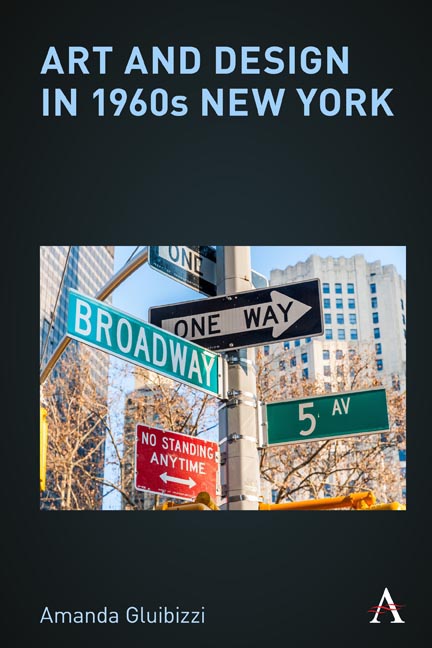Book contents
- Frontmatter
- Contents
- List of Figures
- Acknowledgments
- Introduction: The Entire Visual World
- 1 Designs on 1960s New York: The Image of Pop and North by Northwest
- 2 Breaking the Rules with the Beetle: Volkswagen’s Revolutionary Advertising and the Visual Wit of Andy Warhol’s Pop Art
- 3 Navigating by the Vernacular Glance: Billboards, Signs, and the Urban Combine
- 4 Way-Words: Wayfinding by Following Pieces
- 5 What’s the Matter with the Megalopolis?
- Notes
- Bibliography
- Index
Introduction: The Entire Visual World
Published online by Cambridge University Press: 02 March 2021
- Frontmatter
- Contents
- List of Figures
- Acknowledgments
- Introduction: The Entire Visual World
- 1 Designs on 1960s New York: The Image of Pop and North by Northwest
- 2 Breaking the Rules with the Beetle: Volkswagen’s Revolutionary Advertising and the Visual Wit of Andy Warhol’s Pop Art
- 3 Navigating by the Vernacular Glance: Billboards, Signs, and the Urban Combine
- 4 Way-Words: Wayfinding by Following Pieces
- 5 What’s the Matter with the Megalopolis?
- Notes
- Bibliography
- Index
Summary
When Robert Rauschenberg reminisced about Josef Albers teaching students that their art had to do with “the entire visual world,” he was suggesting an inclusive realm of visual expression from which Albers intended his students to draw. Beyond finding inspiration only in fine art objects, Albers pushed them to look outside the confines of their studios and classrooms and onto the streets and landscapes where they would be confronted with the visuality of mass culture. Thus, a project such as Albers's assignment to build a gray scale out of photographs found in a single magazine was intended to hone students’ awareness of the subtlety of the increments between the darkest black and the brightest white, as well as to attune them to the existence of these subtleties in print materials. And indeed, printed images were all around them: in a 1966 discussion of pop artists titled “The Image Duplicators,” Ellen H. Johnson noted,
Caught in traffic jams, packed in buses, subways, elevators, or spending a quiet evening at home, never has the human being been such a captive of the printed image, constantly changing and endlessly repeated: in books, newspapers and magazines, on the shifting world of the TV or movie screen, the blaring billboards, highway signs, giant lighted ads for hotels, theaters, stores— everywhere pictured products and pictured people beckoning, commanding and assaulting. These are the fields of Suffolk and the Fontainebleau Forest of our painters.
In looking closely at these printed images, though, artists like Rauschenberg learned not only that visual inspiration could be found in quotidian objects but that those objects were also the products of aesthetic decision making, that they were designed. And designers’ own concerns included the very urban makeup described by Johnson. Although the visual workings of mass culture have sometimes been met with discomfort by art historians, artists’ engagement with designed objects— their “personal sense of looking,” as Rauschenberg went on to describe it— has a long and significant history. This book proposes to investigate a moment of that history through an exploration of the interaction between art and graphic design in New York in the years between 1959 and 1972.
- Type
- Chapter
- Information
- Art and Design in 1960s New York , pp. 1 - 18Publisher: Anthem PressPrint publication year: 2021



